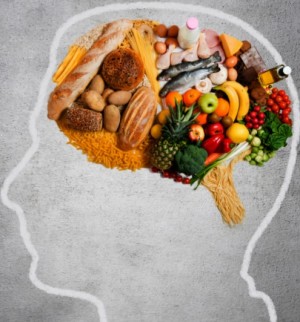Study Shows You Can Re-wire Your Brain For Healthy Eating
Post by RightEatingHabits.com – It is so tempting to indulge when good food is everywhere. How many times have you been able to resist a delectable high-tea buffet (especially if it is a credit card discounted deal) or a quick caffeine fix from a Venti Latte?
A study by researchers from the Tufts University and Massachusetts General Hospital shows that you can re-wire your brain to prefer healthy foods over unhealthy foods – by sustaining healthy eating habits over a period of time. Research findings were published in the Nutrition & Diabetes journal (Sep 1 2014).
For weight watchers, the findings are promising. Though you may have become conditioned to desiring high-calorie unhealthy foods, the study says you could re-condition your brain to prefer and desire low-calorie healthy foods. The researchers concluded that behaviour change education and high-fiber, low glycemic meals were responsible for the successful reconditioning of the brain to like healthy foods.
Research group maintained healthy eating habits for six months
The researchers monitored the eating habits of 13 overweight and obese individuals over a period of six months. Eight participants were put on a low-carbohydrate, high -fiber weight loss diet plan. The researchers have designed a weight loss diet plan based on high-fiber, low glycemic foods. The other 5 participants formed the control group.
Brain shows stronger preference for healthy foods after switch to healthy eating
MRI brain scans conducted six months later showed a change in the part of the brain that controls learning and addiction in participants on the low-carbohydrate, high-fiber weight loss diet plan. Their brain scans showed a greater sensitivity or preference for healthy foods when they were shown pictures of both healthy and unhealthy foods.
Says Professor Susan B. Roberts from Jean Mayer USDA Human Nutrition Research Center on Aging (USDA HNRCA) at Tufts University : “We don’t start out in life loving French fries and hating, for example, whole wheat pasta”. It is a conditioned response that developed over time eating unhealthy foods.
More research is needed due to the study’s small sample size. However, the study does offer a credible option for long-term weight loss.
How to develop healthy eating habits
Poor eating habits develop over time. Similarly, you can form healthy eating habits if you follow healthy eating practices over a period of time. Here are 5 useful tips:
• Apply new healthy eating practices consistently over weeks and months to allow chemical re-wiring in the brain to take place
Studies have shown that it could take more than two months to form a new habit. So, stick to your new healthy eating rules! The low glycemic diet offers an effective healthy eating plan.
• Find a strong reason why you should adopt healthy eating habits
Some people are compelled to make the switch to healthy eating habits because of a pressing medical condition (diabetes, hypertension, cancer). What is your most compelling reason for adopting healthy eating habits?
• Form a support group
Having a friend or group who shares similar interest in weight loss and healthy foods will provide the momentum and motivation to bring about change.
• Change one poor eating habit, one day at a time
For instance, start eliminating calorie-laden beverages such as sodas, fruit juices and frappes from your diet. If you are thirsty, drink lemon water or green tea instead. Green Tea is an antioxidant-rich healthy beverage that promotes natural weight loss.
• Plan and prepare healthy meals and snacks to ensure success
Plan healthy menus for breakfast, lunch and dinner. With menu planning, you can be sure you will be having a more balanced diet. Advice from Mayo Clinic: make sure half your plate is filled with vegetables and fruits, a quarter is lean protein and the remaining quarter, whole grains.
Smart eating habits to help you lose weight permanently
How do I get started
- If you are too busy to plan healthy low carbohydrate, high fiber meals, sign up for a low-carbohydrate meal plan and have personalised healthy meals delivered to your doorstep.
- Get a healthy eating guidePlanning to lose weight? Without a guide as a motivational tool, you may not last the distance. The 500 Low Glycemic Index Recipes by Dick Logue is a helpful guide on healthy eating based on the low glycemic index. The recipe book is thick with ideas on how to create main dishes, snacks and even desserts with low GI foods. Buy Professor Jennie Brand-Miller ‘s The Low GI Diet Revolution: The Definitive Science-Based Weight Loss Plan
if you need to understand how a low GI diet could foster healthy eating habits.
© Teresa Cheong, RightEatingHabits.com



